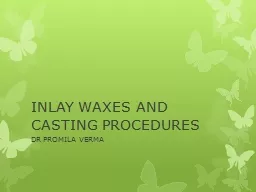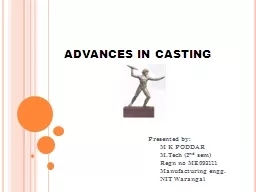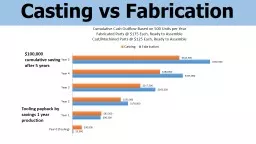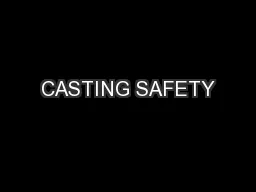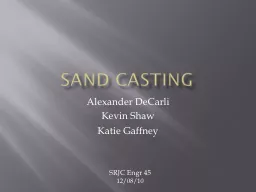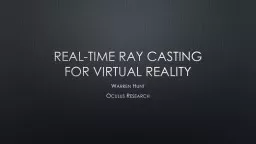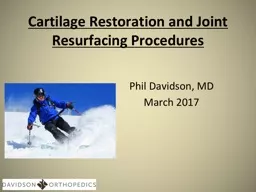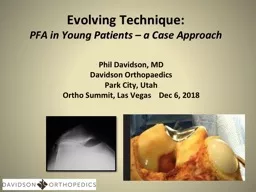PPT-INLAY WAXES AND CASTING PROCEDURES
Author : tatyana-admore | Published Date : 2017-01-28
DR PROMILA VERMA DEFINITIONS Dental wax A low molecular weight ester of fatty acids derived from natural amp synthetic components such as petroleum derivatives
Presentation Embed Code
Download Presentation
Download Presentation The PPT/PDF document "INLAY WAXES AND CASTING PROCEDURES" is the property of its rightful owner. Permission is granted to download and print the materials on this website for personal, non-commercial use only, and to display it on your personal computer provided you do not modify the materials and that you retain all copyright notices contained in the materials. By downloading content from our website, you accept the terms of this agreement.
INLAY WAXES AND CASTING PROCEDURES: Transcript
Download Rules Of Document
"INLAY WAXES AND CASTING PROCEDURES"The content belongs to its owner. You may download and print it for personal use, without modification, and keep all copyright notices. By downloading, you agree to these terms.
Related Documents

